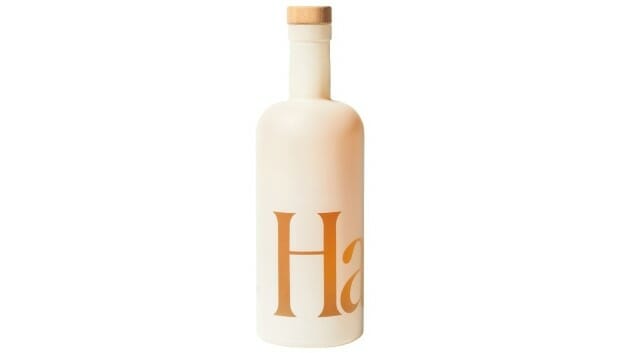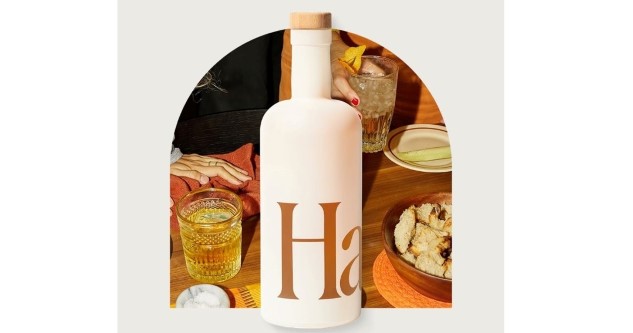
The more time goes by, and the more I write about the craft beer and spirits world, the more I sympathize with those who want to reduce their overall alcohol consumption, or at least consume booze in a more mindful way. Especially as someone who regularly imbibes as “part of the job,” tasting spirits with a certain, professional detachment even in moments when I don’t necessarily “want a drink,” the growing market of low- and non-alcoholic beer/spirits products is an attractive one for several reasons.
The sad truth, however, is that all too often, these products just can’t stand up or satisfy their consumer, unless that consumer is truly desperate to be satisfied. Case in point: I recently tasted several varieties of “zero ABV” gin and whiskey replacements, and they weren’t just disappointing in execution but actively unpleasant to drink. In no rational world could this whiskey facsimile replace the real thing, and I’m beginning to think that direct replacement of spirits with non-alcoholic alternatives is always going to leave a lot to be desired. However, supplementing spirits consumption with occasional, lower ABV replacements is an area that I truly believe shows considerably more promise.
Enter, Sonoma County’s Haus, an independent, California-based “spirits” company that is focused solely on mid-strength aperitivo products, designed very much with the reduction of alcohol consumption (and sugar as well) in mind. The company sees its products as direct challengers to market leaders in the growing aperitif market in the U.S., taking potshots at the likes of Aperol in particular as it points out the merits of its two wine-based, 15% ABV products. And having now tasted both, I believe they could be onto something.
Granted, I typically find brands like this—especially ones that throw around phrases like “think of us as the Warby Parker of booze”—a bit on the overblown side. But Haus is making an interesting product, and it strikes me as one worthy of attention.
What are Haus products?
Haus currently produces two wine-based aperitifs, titled Citrus Flower and Bitter Clove. Created by husband-and-wife team Woody and Helena Hambrecht, the base of Haus is made with an unoaked Chardonnay grape wine base, modified with various elements of citrus and botanicals, which are sourced from the couple’s ranch. Every batch is made and bottled by the small operation in California. The brand isn’t available through any kind of traditional distribution chain; rather it is self-distributed by the Hambrechts online, who are benefiting from the legal definition of the product as “wine,” being under the maximum threshold (24% ABV) that would put it above wine strength. In doing so, they can entirely avoid the distribution networks dominated by the small group of mega-corporations that dominate the liquor market: Diageo, Pernod, Sazerac, Beam-Suntory, Campari Group, etc.
MSRP on each bottle is roughly $35, which puts it somewhere north of what you’d expect to pay for high-quality vermouth (which is probably the closest comparison for Haus, stylistically), but more or less in line with your average bottle of imported amaro. Together, the two products can be purchased via the Haus website in a dual pack for $70.
One of the aspects of the marketing of Haus that immediately struck me as unique is the way the brand’s ads and marketing materials focus explicitly on Haus as an aperitivo or neat drinking product. Although other products such as vermouth or Aperol are indeed consumed in low-ABV guises, or neat by certain consumers, it seems safe to say that many of us know them primarily through the fact that they are mixed into high-ABV cocktails. Many are introduced to sweet vermouth, obviously, because it’s one of the three ingredients of a classic Manhattan. Many more in recent years have found Aperol, beyond the ubiquitous Spritz, in cocktails like the bourbon-based Paper Plane. This can lead the consumer to think of each as primarily a “cocktail ingredient,” but the Hambrechts are stringent about this not being the intended purpose for either type of Haus. They really do want consumers to drink Haus all on its own, or with a few mixers.
“People are buying Haus because they’re looking for a replacement for high-ABV liquor, so we suggest they drink it like a liquor,” said Helena Hambrecht, in response to Paste’s questions. “If you want to drink it on the rocks, with a tonic, or in a spritz, by all means. We don’t want to reinvent the wheel—it’s meant to fit into how people are already drinking. The beauty of aperitifs is you don’t need to do much to it for it to drink like a complex cocktail.”
In fact, this apparently isn’t the first aperitif product designed by Woody Hambrecht, but the creator was dissatisfied in seeing his drinks regularly used as mixers in high-ABV cocktails—Helena suggests it “went against why he was creating aperitifs in the first place.”
“Creating Haus as a direct-to-consumer brand gave us an opportunity to introduce aperitifs in the way they were intended to be drank—as the base of a simple cocktail that you can drink all night without the consequences,” she said. “That’s why we sell directly to the drinker instead of to distributors or bartenders—mixologists don’t need us, drinkers do.”
Certainly, you can’t fault the people at Haus for having cloudy ambitions—they know exactly what kind of product they’re trying to produce, and they know exactly how they intend for it to be consumed. So, in the spirit of honoring that, let’s taste both of them neat.
Haus Citrus Flower

Haus is not shy about framing the consumer’s expectation for what kind of sphere Citrus Flower is operating in, considering they refer to it as “an alternative to Aperol.” That begs for the drink to be used in the classic Aperol Spritz, and in a handful of other low-ABV mixed drinks, in addition to neat consumption. In terms of the “tale of the tape,” Citrus Flower is actually a bit stronger (15% ABV) than Aperol (11% ABV). Despite that, the company naturally wants to highlight the fact that their product is actually much, much less saccharine than its competition. According to Haus, in fact, Citrus Flower is “7 times lower in sugar” than the popular Aperol. I asked for numbers to quantify that quote, and Helena Hambrecht said the following:
We’ve tasted over 100 aperitifs over the years in our market research for Haus (and we also just like aperitifs). We found that all of them were way too bitter and sweet for our palates. So once we locked in the Haus recipe we did some lab tests to see where we stack up to other best-known aperitifs. We found that we had a fraction of the sugar of everyone in the space. We calculated 32g/L sugar on Haus while Aperol had 281g/L.
To her credit, Hambrecht went on to clarify that this doesn’t mean Haus is trying to market itself as “good for you,” merely stating a direct comparison.
“To be clear, we don’t think of ourselves as a ‘low sugar’ or ‘wellness’ brand,” she said. “We’re still booze, and we have sugar, and we’re designed for people who love drinking. We just wanted to make something that was way better than what was out there. We were solving a problem for ourselves and it turned out there were a lot more people who were looking for the same thing.”
So then, how is it? Let’s taste.
On the nose, Citrus Flower evokes lime in my opinion (it’s made with lemon), along with pronounced elderflower and honey sweetness. On the palate, it contains a little bit of herbal bitterness but is primarily a sweet aperitif, with a pleasantly smooth texture. Lemon-lime citrus is moderate in terms of intensity, with light notes of grass/hay and very faint mustiness/earthiness. Overall, it’s not extremely complex, reminding me of a much less sweet St-Germain rather than Aperol specifically.
All in all, it still presents somewhat on the sweet side, despite having so much less residual sugar than Aperol—I suspect because it’s not as balanced with bitterness. It is pleasant and fairly easy to drink overall, although it’s a little bit sweet to drink neat, for my taste. A few cubes of ice might take this down into territory where I’d like it, although soda water or tonic might be the real trick here. Would it play nicely with gin? It certainly would, although that would be defeating the purpose in the eyes of the Hambrechts.
Haus Bitter Clove

Now this is where things get really interesting, to me. Unlike the sweet and friendly Citrus Flower, Bitter Clove is a spice-based (obviously) aperitif that Haus is trying to point in the direction of brown liquor drinkers. Considering that I am in fact one of those brown liquor drinkers, it perhaps makes sense why I enjoy this product more overall (especially neat) than the Citrus Flower, but mostly I just appreciate the fact that it isn’t meant to “taste like whiskey.” This isn’t a 15% ABV imitation bourbon; it’s a spiced aperitif meant to appeal to drinkers who appreciate some of those same flavors. Sensible, right?
I have no idea of the full composition of this particular bottle, besides the fact that it includes star anise and cloves on the same wine base, but it comes off as significantly different in profile. The nose I at first read as Chai-like, but I eventually settled on a different tea that captures it more accurately: Constant Comment. That particular tea blend is characterized by “orange rind and sweet spices,” and Bitter Clove reminds me of the same.
There’s a clove spiciness, obviously, but it doesn’t hit you over the head with that note—this drink is subtle and potable, without a really high volume of flavor. It’s easygoing but complex in its spiciness, with notes of cassia, anise and blood orange citrus, along with a definite tinge of the grape skin/a tannic dryness on the finish. Bitterness is a bit more pronounced than in the Citrus Flower, which makes sense given that it’s right there in the name, but it’s still mild in terms of bitterness compared with a bitter aperitif or liqueur like Campari or Chartreuse. All in all, I can’t help but think that people who like spiced tea will love this.
I enjoyed drinking this sample neat, to the extent that I don’t think it needs dilution or ice. Does it remind you of whiskey? Not actively, no, but it scratches some of the same desires. Notable is the fact that I can imagine myself simply drinking this, rather than finding a way to incorporate it into stronger cocktails.
In the end, the business model of Haus will allow consumers to make that kind of choice for themselves, without the gatekeepers of the industry (bartenders) influencing how each product will be used. It will be fascinating to see if true aperitivo culture continues to grow in the U.S., but I genuinely do believe the products like Haus are beginning to find their niche, especially with millennial consumers.
Jim Vorel is a Paste staff writer and resident brown liquor geek. You can follow him on Twitter for more drink writing.